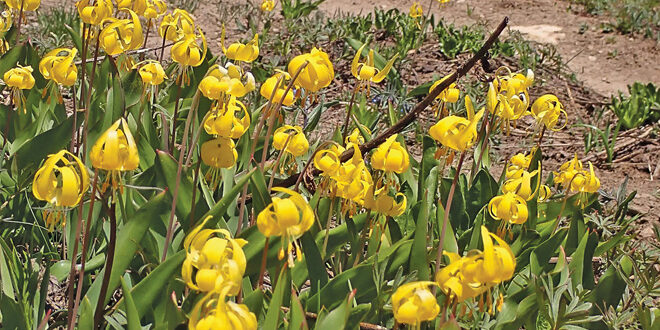Some other Spring Beauties
By Tom Zeiner, CB Wildflower festival
The North Valley has put on a great wildflower show in the last couple weeks. We talked about pasque flowers last week, but there are a couple other blooms lighting up the hillsides in this early season.
A walk on Teddy’s Trail will show you how nature can cover winter-beaten ground with color. Until larger plants like sunflowers can provide a covering of green, spring beauties (Claytonia lanceolata) make a white and pink blanket on the barren slopes along with glacier lilies (Erythronium grandiflora). Spring beauties are a true spring ephemeral flower. They bloom for a few weeks in the spring before completing their cycle and storing up some energy for the next year. By the time those sunflowers are out these beauties will have withered away.
Look at their flowers and you’ll see a range of pink to white in the petals. The anthers are pink, too. This unusual color probably attracts early season pollinators including flies, bees and beetles.
Spring beauties grow from a corm, basically a bulb, so they are perennials, and though the individual stems are new each year, the plant lives for many years.
Our other beauty will be fading from the valley and appearing in higher venues as the season warms up. Glacier lilies are a classic follower of spring—you can find them wherever the snow is melting. By mid-July there will only be a few left in high alpine cirques.
Lewis and Clark recognized that our glacier lilies were similar to a species in the east and realized that they were a harbinger of springtime. Glacier lilies also grow from a corm. Two broad leaves surround a slim stem holding a flower with six bright yellow petal-like tepals which curl backward exposing the long anthers. It is edible raw, although they are more digestible when cooked. The root has also been used medicinally by tribes in the northwest.
These flowers won’t be around much longer. Enjoy them while you can!
 The Crested Butte News Serving the Gunnison Valley since 1999
The Crested Butte News Serving the Gunnison Valley since 1999


